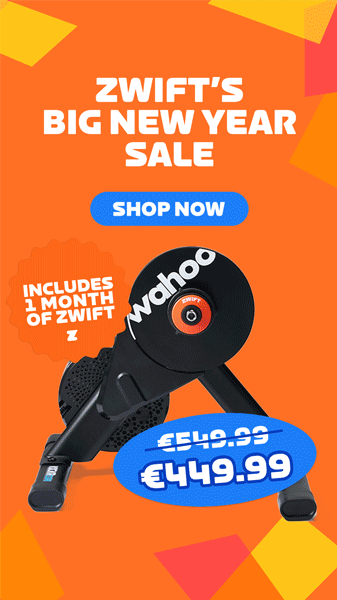With more and more Zwifters coming online, we’re seeing more and more questions about how to get set up on the platform.
One common confusion involves getting your bike mounted onto your smart trainer. Specifically, riders who purchase a direct-drive trainer must figure out how to connect their frame to the trainer properly. If you aren’t a seasoned cyclist, this can be an intimidating task!
But never fear. This article covers identifying what sort of trainer and axles you’re working with, then explains how to mount your bike securely on the trainer.
First things first: what sort of trainer are you using?
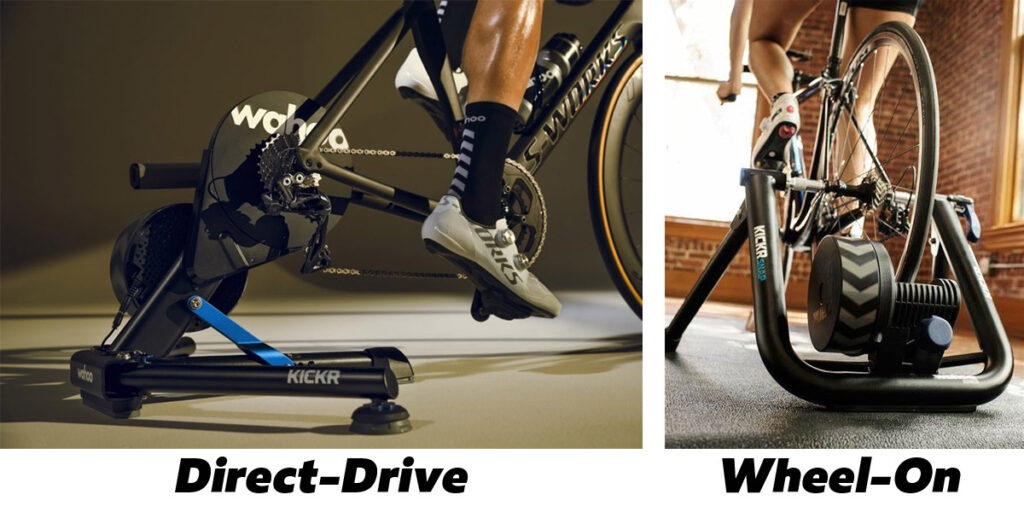
- Direct-Drive Trainer: any trainer that requires you to remove your bike’s rear wheel so the trainer can mount directly to your frame via the rear axle. These are called “direct-drive” because your bike chain is mounted onto the trainer’s cassette, directly driving it like it drives your rear wheel outdoors. See our top picks for budget direct-drive trainers and premium direct-drive trainers >
- Wheel-On Trainer: as the name indicates, your rear wheel stays on with these trainers. The trainer detects power based on how fast your wheel causes the tension roller to spin. See our top picks for wheel-on trainers >
This article only covers setting up your bike on a direct-drive trainer.
Types of Axles: Quick Release and Thru Axle
Modern bicycles use one of two axle types: quick release or thru axle.
Quick Release
Quick release was the standard axle used on most bikes for decades. A quick release axle is a thin metal skewer that runs through the wheel’s hub. The skewer is held in place by an acorn nut on one side (the right-hand side, if you’re sitting on the bike) and a cam lever on the other. Two small springs sit on either side of the hub.
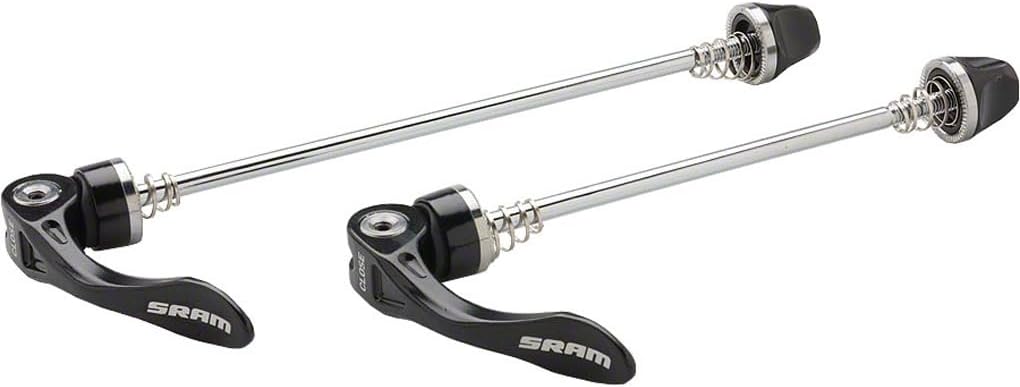
Quick releases are cheap and allow you to easily remove and replace wheels quickly without any tools. Frames that use quick-release levers have slots for the wheel axles to slide into, vs holes used by thru axles setups.
Note: if you are a heavier rider and/or put down bike watts, we recommend using a heavier-duty quick release with a steel skewer on your trainer vs the lighter aluminum or titanium skewers that often ship with bikes. Read more about this topic >
Thru Axle
Thru axles are a newer technology, having arrived on the scene in the early 2000s as mountain bike frames became stronger and disc brakes demanded better performance from wheel axles. A thru axle is a thick pin with threads on one end. You insert this pin through your frame’s hole on the left side, through your wheel, then thread it into the frame on the right-hand side.
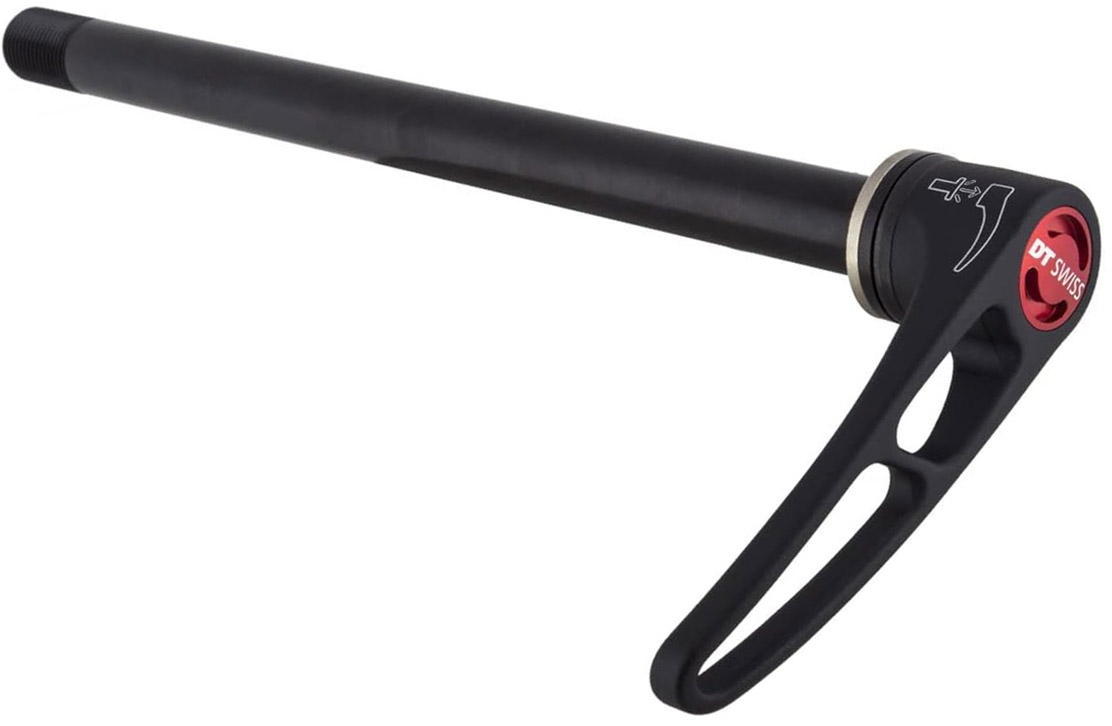
Thru axles are much thicker than quick release axles, and they don’t run the risk of your wheel dropping out of the quick release frame slot since they’re threaded directly through the frame.
Thru axles generally perform better than quick releases in all scenarios, which is why you’ll find them on most mid to high-end bikes sold today. That said, they’re also more expensive, heavier than quick releases, and make wheel removal a slightly more time-consuming task.
Determining Axle Length
When setting up your bike on a direct-drive trainer, you’ll need to know the length of your axle to install the correct adapters and ensure a snug fit. These adapters typically ship with your direct-drive smart trainer and are labeled for easy use.
Axle length is measured from the inside of the frame where the quick release dropouts or thru axle holes are found. While the world of bikes uses a variety of axle lengths for the rear wheel, just four are considered “standard” today. Frames using quick releases are typically 130mm or 135mm wide at this measurement point, while thru axle frames are typically 142mm or 148mm wide.
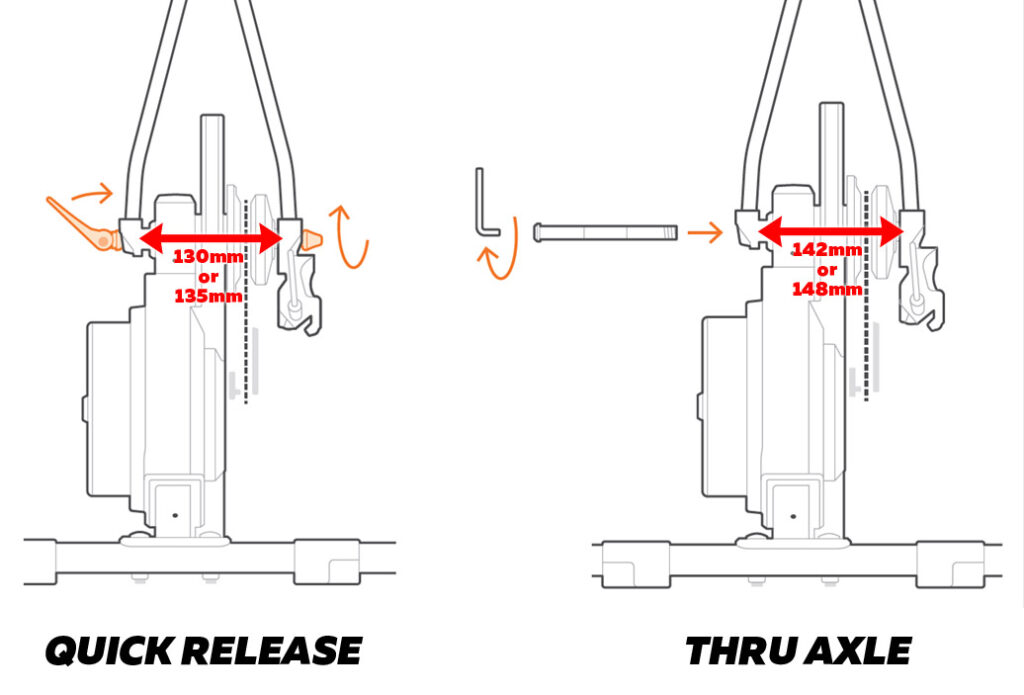
Installing Your Rear Axle
For quick-release users, once you have your frame mounted on the trainer, hand-tighten the quick-release before clamping down the lever to finish the installation. Important notes:
- Ensure your bike frame is seated level on the quick release adapters before clamping the quick release lever.
- You want the quick release to be tight enough that it leaves an imprint on your hand when you close it. That said, it shouldn’t be so tight that opening or closing it is arduous work! Overtightening your quick release can damage your frame’s dropouts, while having it too loose can allow your frame to come off the axle under heavy load, possibly causing major damage.
For thru axle users, installation is more straightforward. Line up the frame with the holes on the trainer then thread your thru axle through the frame and trainer, tightening it down snugly as you do when installing your rear wheel.
Questions or comments?
We hope this article clarified quick releases and thru axles for you, and helped you get going on Zwift more easily. Got questions or comments? Share below!
